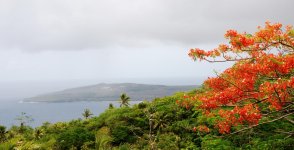OLDNAVYMCPO
US Veteran, Absent Comrade
On this day in 1944, in our march across the South Pacific to regain military control and achieve a base of operations from which we could launch B-29 attacks on mainland Japan, we invaded Tinian Island in the Marianas.
After eight days of naval bombardment, the 4th Marine Division aided by Seabees of the 18th and 121st Naval Construction Battalions, landed on the Northwest coast of the island. The 2nd Marine Division landed the next day.
Of the approximately 9,000 Jap defenders, only 313 survived. There were approximately 15,700 Jap civilians and Korean slaves on the island. Many were killed in the fighting, committed suicide, or were murdered by the Jap soldiers.
Fifteen thousand Navy Seabees built six 8,500 foot runways. The 110th Naval Construction Battalion surveyed and commenced construction on a base to house 40,000 military personnel.
From this base, the 20th Army Air Corps launched Boeing B-29 Superfortress Bombers against mainland Japan, including the two atomic bombs dropped on Hiroshima and Nagasaki.
After eight days of naval bombardment, the 4th Marine Division aided by Seabees of the 18th and 121st Naval Construction Battalions, landed on the Northwest coast of the island. The 2nd Marine Division landed the next day.
Of the approximately 9,000 Jap defenders, only 313 survived. There were approximately 15,700 Jap civilians and Korean slaves on the island. Many were killed in the fighting, committed suicide, or were murdered by the Jap soldiers.
Fifteen thousand Navy Seabees built six 8,500 foot runways. The 110th Naval Construction Battalion surveyed and commenced construction on a base to house 40,000 military personnel.
From this base, the 20th Army Air Corps launched Boeing B-29 Superfortress Bombers against mainland Japan, including the two atomic bombs dropped on Hiroshima and Nagasaki.







